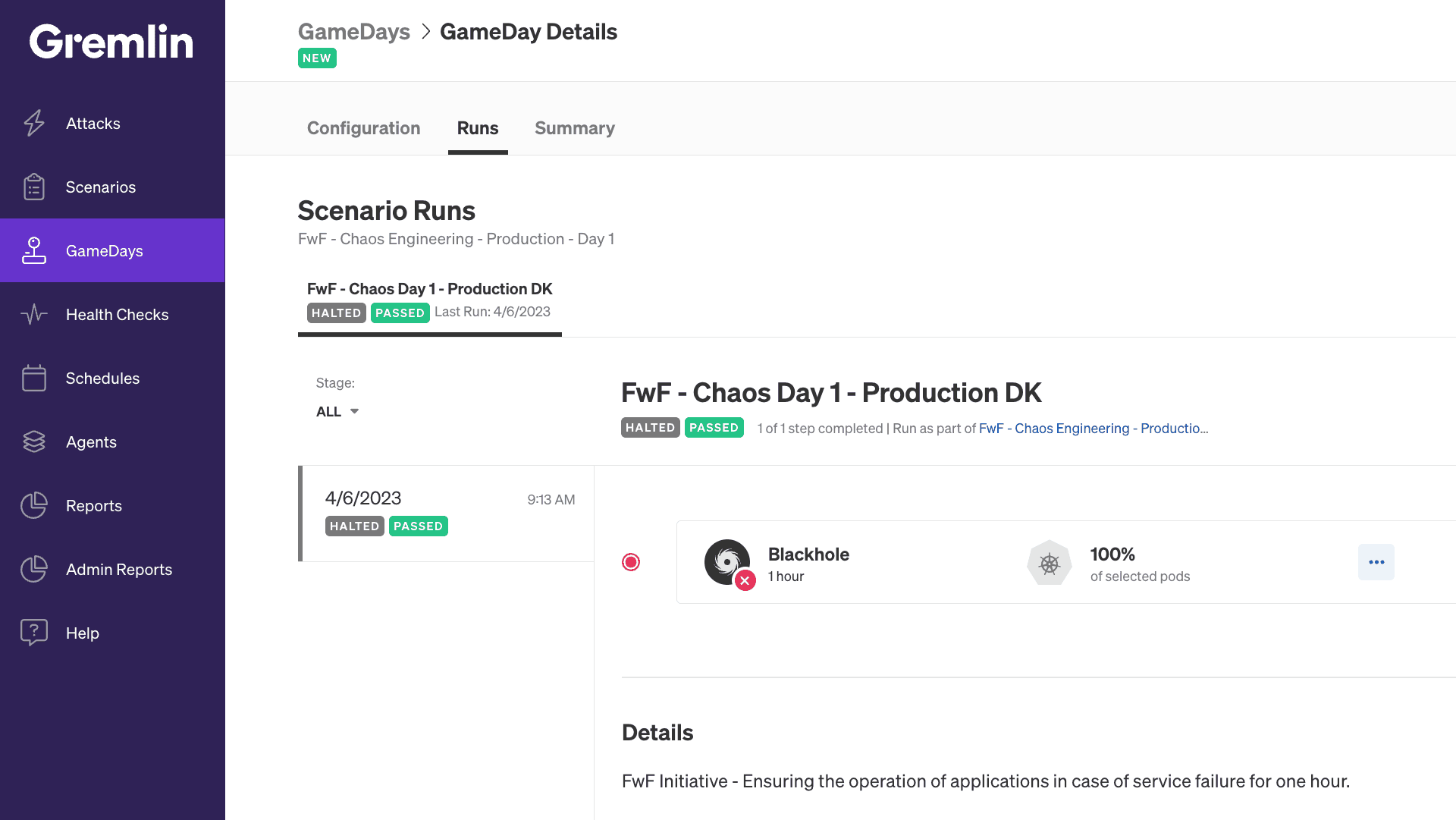We challenged technology teams to test a long outage of a configuration application in a production environment for an hour without losing any requests using Chaos Engineering. And guess what? We did it!
How did we get here?
Over the past few months, our team has embarked on an exciting and challenging experiment in chaos engineering. Our goal was simple: understand the behaviour of our services and ensure the smooth operation of our applications in the event of a prolonged outage of a third-party application. The results were astonishing, and we are proud to share our findings with you in this blog post!
As a company that serves millions of users worldwide, we understand the importance of proactively identifying weaknesses in our complex systems. That’s why we follow in the footsteps of tech giants like Google, Amazon and Netflix, adopting chaos engineering experiments to ensure reliability and resilience.
In previous years, our platform experienced lost orders due to issues related to feature and configuration flags. Determined to address these issues, we challenged our technology product line leaders to test a long outage of a configuration application in a production environment for one hour without losing any orders. And guess what? We did it!
The Experiment: Diving into Chaos to strengthen applications
Have you ever wondered how technology companies manage and test new features in their applications before making them available to end users? Or even how each environment has its specific configuration according to location? One of the most common practices is to use feature flag management systems. In this experiment, we explore how the usage of Chaos Engineering can improve the resilience of an entire ecosystem that uses a third-party application for configuration and/or availability.

Chaos Engineering is a systematic approach to improving the resilience and reliability of a system by introducing controlled failures and disturbances into specific environments. This practice helps identify and solve problems before they cause unwanted disruptions, thus ensuring the system can cope with and adapt to different failure scenarios.
This way, teams can learn how systems react under pressure and improve their recovery capacity when facing adverse events, using the tool to reduce the blast radius. Some examples can be running tests in production during low-traffic hours, experimenting in staging environments, and experimenting on a specific percentage of application instances.
The Challenge: Putting the system to the test
To perform the proposed tests, we used the Gremlin Chaos Engineering tool, which allowed us to create blackhole attacks.

The concept of Blackhole, used by the Gremlin, refers to a technique that simulates a complete interruption in communication between the components of a distributed system. During a Blackhole attack, the Gremlin intercepts and discards all network traffic between affected services, creating a situation where the components cannot communicate amongst themselves, as if they were isolated in a black hole.
Using this approach, we can temporarily interrupt communication between the services involved, putting the system’s resilience and ability to recover from communication failures to the test. These assumptions reflect real problems that have been encountered on the platform in the past, so we were able to simulate the incident again and ensure that everything works as it should.
The Method: Striking at the core of the system
The Chaos tests started to be executed in controlled environments. There were six tests in development environments, simulating the scenario that we would have in production. This step was necessary so that we could minimize the blast radius and guarantee that the monitoring was adequate so that no detail would go unnoticed.
Throughout the experiment, we introduced a series of attacks known as Blackhole at different times and in a controlled way. This allowed us to observe how each application, which depended on the attacked service, behaved when an interruption occurred.
We were also able to understand which services had hidden dependencies on this service, as well as the bottlenecks that the lack of service could cause in applications. This approach helped us identify weaknesses and areas for improvement in the system.
The Results: Revealing hidden secrets
At the end of the experiment, we came across some surprising findings. We discovered that while the feature flag management application was robust in many ways, some specific areas needed attention. We identified real issues before they became incidents, potentially resulting in lost orders.
Among the problems encountered, we can cite the application of patches that collect new metrics aiming at observability, bug fixing related to latency increase, and a lack of valid configuration in case of failure to obtain the feature flag. In addition, the experiments brought about improvements in communication between internal third-party services, providing greater resilience to the system as a whole, including ways to work around failures in a real-life scenario.
Conclusion – The Future: Breaking new ground
This experience enabled us to demonstrate the power of Chaos Engineering in identifying and resolving issues before they can negatively affect end users, as well as ensuring that problem monitoring is adequate and that staff know what to do when a related problem occurs. This allows us to think proactively, identifying failures even before an incident occurs and no longer be reactive to problems during a change.
For our teams, the experiment gave us a better understanding of service behaviour and how we can improve our applications to solve unknown bugs, without losses. Based on one internal survey conducted after the production test, it is evident that the majority of respondents found chaos engineering experiments to be effective in uncovering potential system weaknesses or vulnerabilities.
60% indicated it was very effective, and 20% indicated it was extremely effective. Additionally, 80% of respondents agreed that the steps and procedures of the chaos engineering experiment were communicated and easy to follow.
The participants also expressed interest in delving deeper into Chaos Engineering in their respective teams. All participants indicated that they intend to conduct experiments in the near future as part of the application lifecycle.
Would you like to become a Hero? We have good news for you, join our Talent Community to stay up to date with what’s going on at Delivery Hero and receive customised job alerts!


